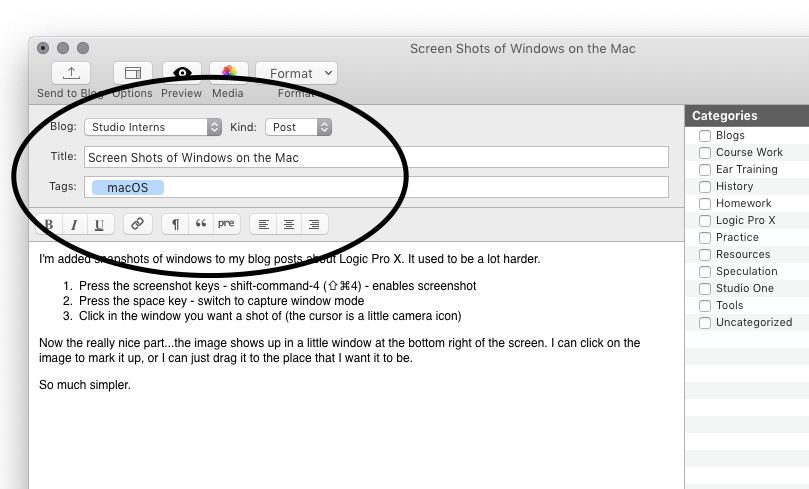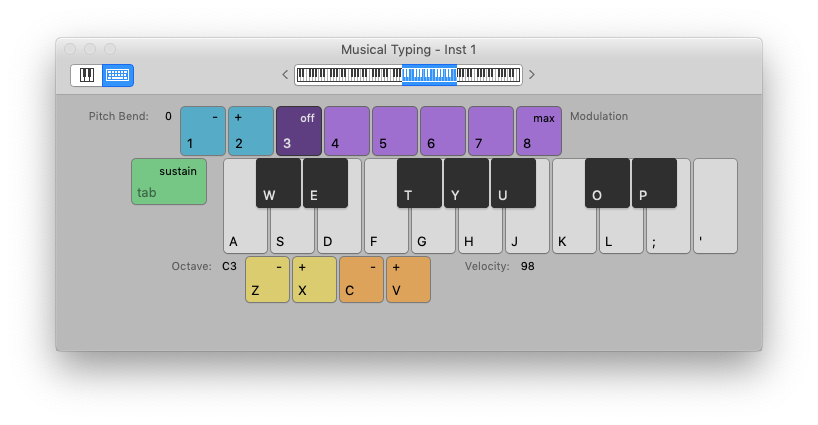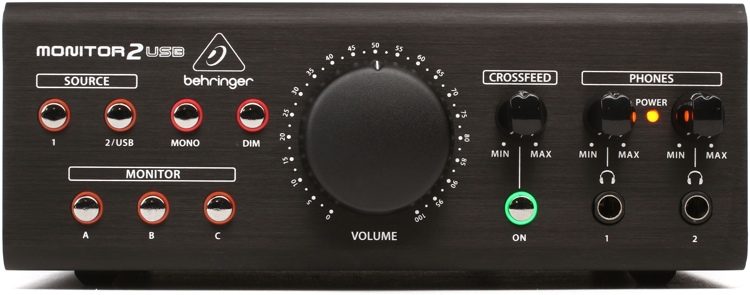I’m added snapshots of windows to my blog posts about Logic Pro X. It used to be a lot harder.
- Press the screenshot keys — shift-command-4 (⇧⌘4) — enables screenshot
- Press the space key — switch to capture window mode
- Click in the window you want a shot of (the cursor is a little camera icon)
Now the really nice part…the image shows up in a little window at the bottom right of the screen. I can click on the image to mark it up, or I can just drag it to the place that I want it to be.
So much simpler.


